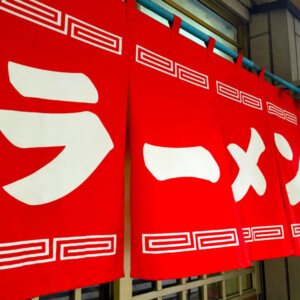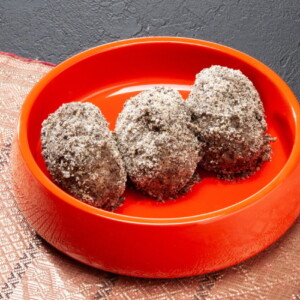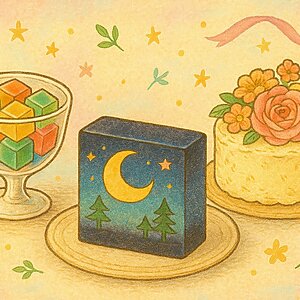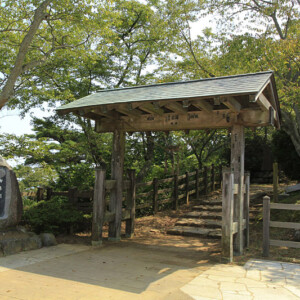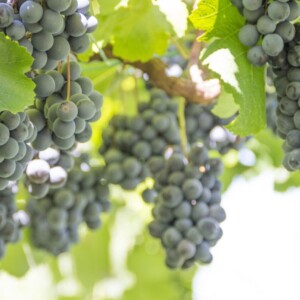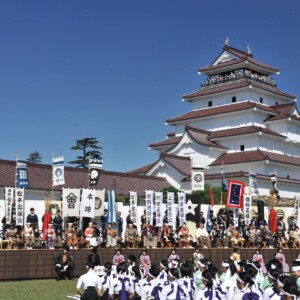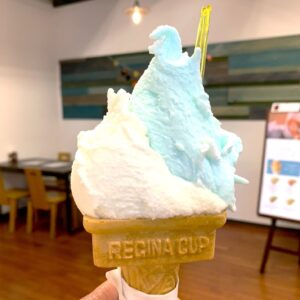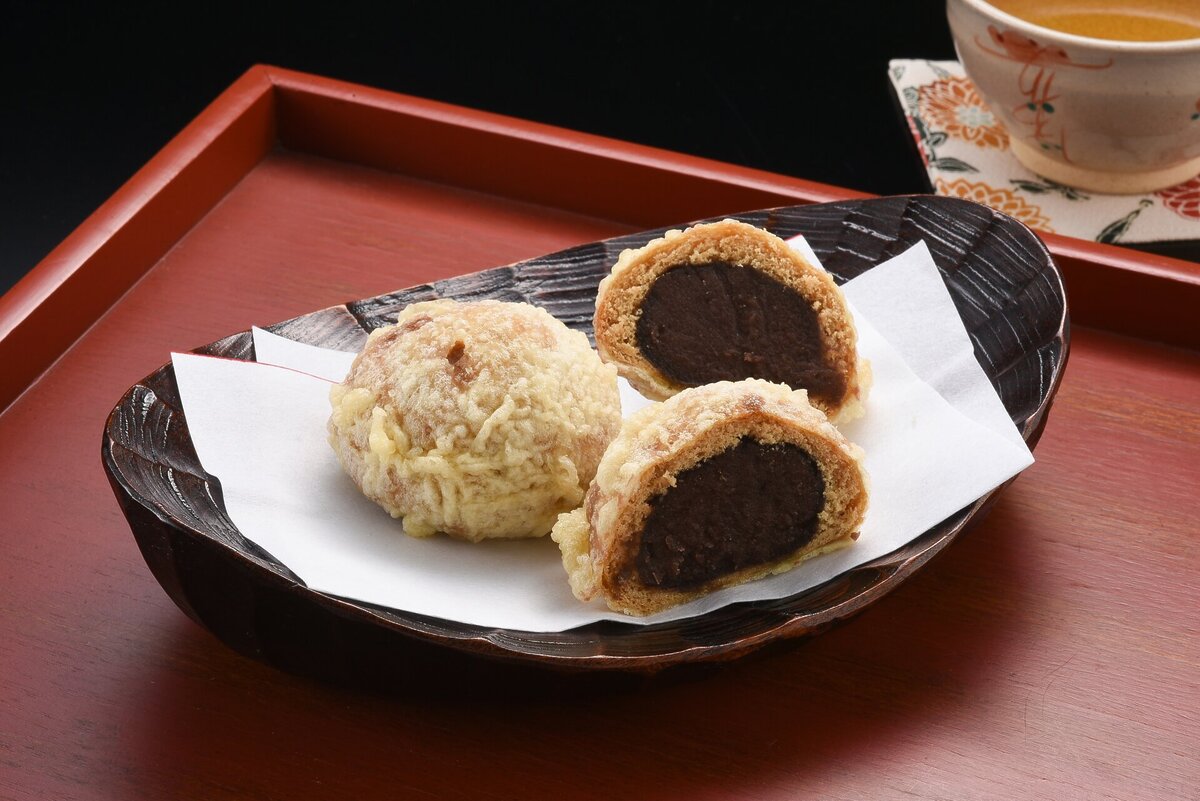
Is Manju Tempura really delicious? We also introduce famous shops and how to make them [Fukushima Prefecture]
table of contents
When you think of the classic ingredients in tempura, what do you think of? Shrimp, sweet potato, maitake mushrooms, shiso leaves, and manju.
...Huh, manju? that's right. It's a manju with bean paste. In the Aizu region of Fukushima Prefecture, there is a culture of using manju as a tempura ingredient.
It may seem like a bizarre food, but it's surprisingly good, so if you haven't tried it yet, I recommend you try it.
This time, I would like to express my voice to you about the charm of "manju tempura."
Why do you fry "manju"?
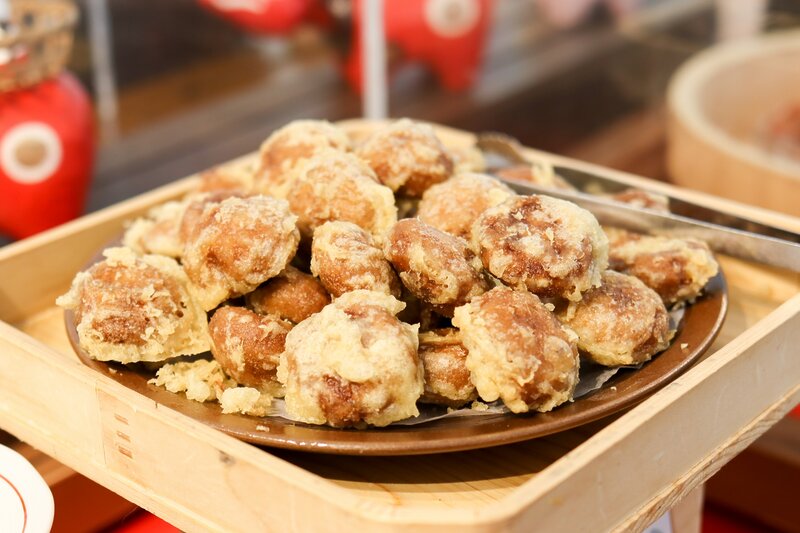
Tempura is a culture for rural areas in the Tohoku region, including Fukushima Prefecture. Especially during the days when people often gather, such as weddings, funerals, and the New Year holidays, tempura is easy to prepare in bulk and can be said to have been a standard menu item, making it delicious even when it gets cold. Furthermore, it is not easily damaged due to its heat, which is a great feature in the summer.
Why did manju begin to make tempura in the Aizu region of Fukushima Prefecture? According to one theory, it was a wisdom to eat deliciously delicious buns that have been offered to a Buddhist altar. So, rather than being lined up at the dining table on a regular basis, it seems like a carefree dish that you make whenever you have a bun.
By the way, it is similar but not the "fried manju" and "karinto umami buns" that you sometimes see at Japanese confectionery shops. Manju tempura is manju tempura. Just like making tempura with shrimp and vegetables, they are dressed in tempura batter.
When you say "manju tempura", "Tsukishimizu" is famous
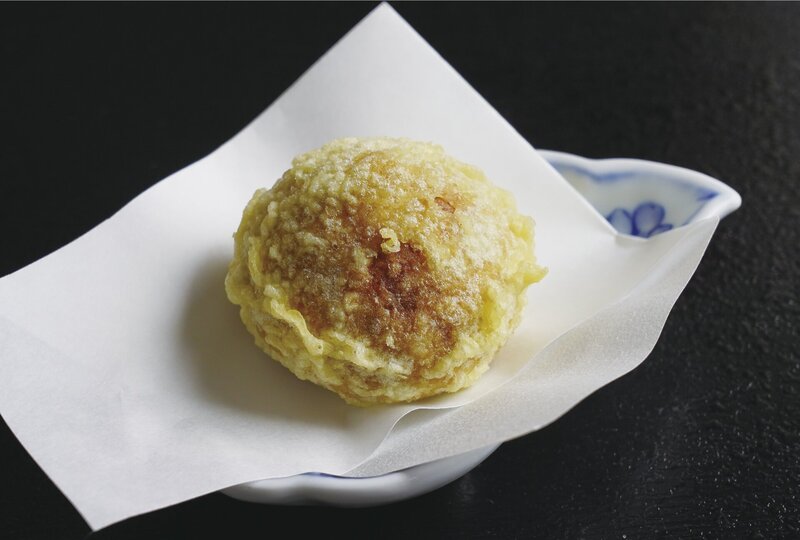
Manju tempura is now known as a local dish of Aizu, but as mentioned above, it can originally be said to be a home-like taste. There was little perception that it was a food eaten in a restaurant.
However, in Fukushima Prefecture, there is a "famous restaurant" for manju tempura. That is "Kowashimizu".
The shop is located along the highway that runs from Aizu Wakamatsu City to Inawashiro, and is one of the three major tea shops that specialize in Aizu .
It is said that the place name comes from the clear, fresh water that gushs out loud. Incidentally, it seems that this legend remains in Toshimizu.
There was a father and son named Yosoichi, a hard-working woodcutter, and Yosoji, a lazy son who was always doing bad things.
The waters of Lake Inawashiro continued to drought so much that it was visible to the bottom, and in the year that it was a hugely cruel crop for two years, Yosoji was exhausted from hunger. However, when I come home after finishing mountain work, my father, Yosoichi, I always feel a little tipsy when I get home. Strangely, Yosoji secretly tried to follow his father one day.
Then my father had been drinking Shimizu on his way home and was tipsy. Yosoji said, "I've done this and tried drinking water...but it was just Shimizu.
A little while later, as Yosoji was sleeping, Benzaiten appeared on his pillow. He quietly advised, "That Shimizu is a spring of blessing that brings happiness to people. However, you did not receive any blessings. Looking back at me, why this was the case."
Yosoji, who was strongly influenced by his divineness, looked after his sins and became a filial son who seemed to have been reborn. He then built a temple near Shimizu and lived there for a long time as a guardian of the hall.
The fresh water that springs up in the strong-shimizu has been cherished since ancient times as a blessing to the people.
Manju tempura served at the original Shimizuya is made using handmade manju. The tea buns have a thin skin, and there is plenty of sweet bean paste inside. Freshly fried is hot and crispy.
Now, let's eat it... Many people will notice something before biting it in, and their chopsticks will stop tightly. What should you eat manju tempura? Even if you usually eat salt or tempura with tempura, you may be struggling to find the best solution if you like manju.
If you're unsure, we recommend "soy sauce". The combination of sweet bean paste and salty soy sauce goes perfectly. As the batter bursts quickly, a plump sweet potato appears from inside, and the salty soy sauce is gentle. The oil is thoroughly drained, so even if it sticks to it, it won't cause stomach distress.
Incidentally, the specialty dishes that are available in the original Shimizuya are Nishin tempura and Surume tempura. There is also a tempura set that is an assorted platter of manju, nishin, and sulame. Please check it out as well.
The original Shimizuya <Information>
- Name: Original Shimizuya
- Address: 406-1 Koshimizu, Hatta, Kawatocho, Aizuwakamatsu City, Fukushima Prefecture
- Phone number: 0242-94-2008
- Official URL: Shimizuya, the original creator of Aizu's three major specialty tea shops, "Toshimizu"
Google Map
Can you make it at home? Manju tempura
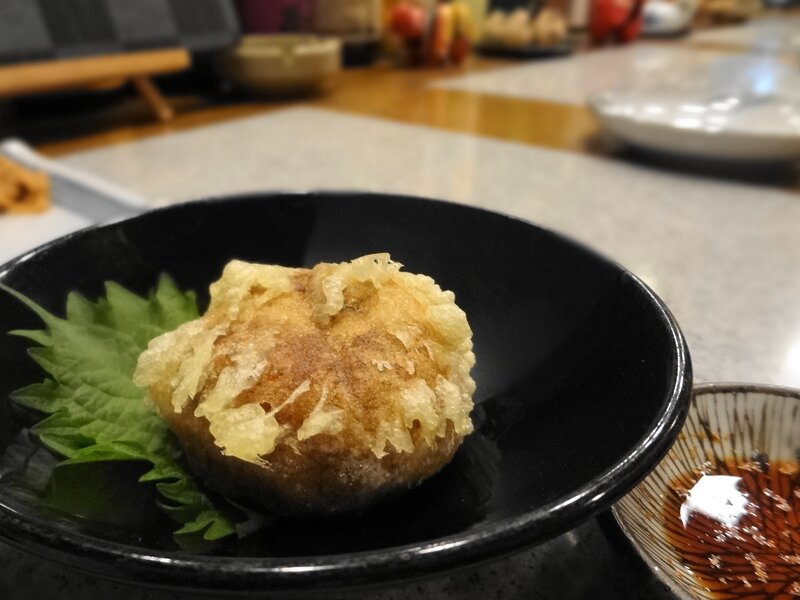
Of course, you can make manju tempura at home. Just like regular tempura, just dip the buns into tempura flour batter and fry them! We recommend using standard tea buns.
Here are some tips for making it delicious.
- Don't let your clothes get too tight, just wear them lightly
- The oil temperature is 170°C and frying time is about 2-3 minutes
- Leave it alone until the surface hardens.
The ideal texture of the batter is crisp. The texture is fun and you can enjoy it lightly. Be sure to try it out when you have a bun at home. If you get hooked, you might want to buy some manju to make it into tempura?
Manju Tempura is a very delicious local dish
This time we introduced Manju Tempura, a local dish that is passed down in the Aizu region of Fukushima Prefecture.
Manju tempura is similar but not like karinto umami buns or fried manju. Just hearing the name may surprise you, "What?", but after eating it, you will be surprised at how delicious it is. When traveling to Aizu, be sure to enjoy authentic, traditional flavors at Koshimizu. It is also recommended to eat freshly fried and piping hot at home.



![I listen to it suddenly. Hong Kong yakisoba is delicious, right? It's the same nationwide, right? [Miyagi Prefecture] IMG_1040](https://jp.neft.asia/wp-content/uploads/2025/01/IMG_1040-150x150.jpg)
![What was "Kirisensho" that pitcher Kikuchi Yusei thought would be in the national category? [Iwate Prefecture] Kirisensho catch](https://jp.neft.asia/wp-content/uploads/2025/03/ea82b15c4394af6b2a80eec03bd2b571-150x150.jpg)
![A winter illusion woven with sweet dew... A review of the history and actual food of Kokonoe Honpo Tamazawa's "Shimobashira"! [Miyagi Prefecture] 2023-03-29 19.56.24](https://jp.neft.asia/wp-content/uploads/2023/04/2023-03-29-19.56.24-150x150.jpg)
![A day trip to Iizaka Onsen on the Fukushima Kotsu Iizaka Line (Iiden) from Fukushima Station! [Fukushima Prefecture] Disk dumplings from Hobaraya Shokudo](https://jp.neft.asia/wp-content/uploads/2024/01/PXL_20231029_053137111-150x150.jpg)
![Date Harumune's grave and his figure at Hoshuji Temple in Fukushima City [Fukushima Prefecture] Harumune Date, a portrait of the Sendai City Museum](https://jp.neft.asia/wp-content/uploads/2025/01/Date_Harumune-150x150.jpg)

![[Yonezawa City, Yamagata Prefecture] “Naseba Naru Autumn Festival” was fun and delicious! PXL_20220924_045212520.MP](https://jp.neft.asia/wp-content/uploads/2022/09/PXL_20220924_045212520.MP_-150x150.jpg)
![[JR East Pass Trip: Day 2 Part 1] I'm already turning back to Iwate. Our goal is Hiraizumi, a town of history! Shinkansen platform near Akita Station](https://jp.neft.asia/wp-content/uploads/2022/12/IMG_3940-1200x900-1-150x150.jpg)
